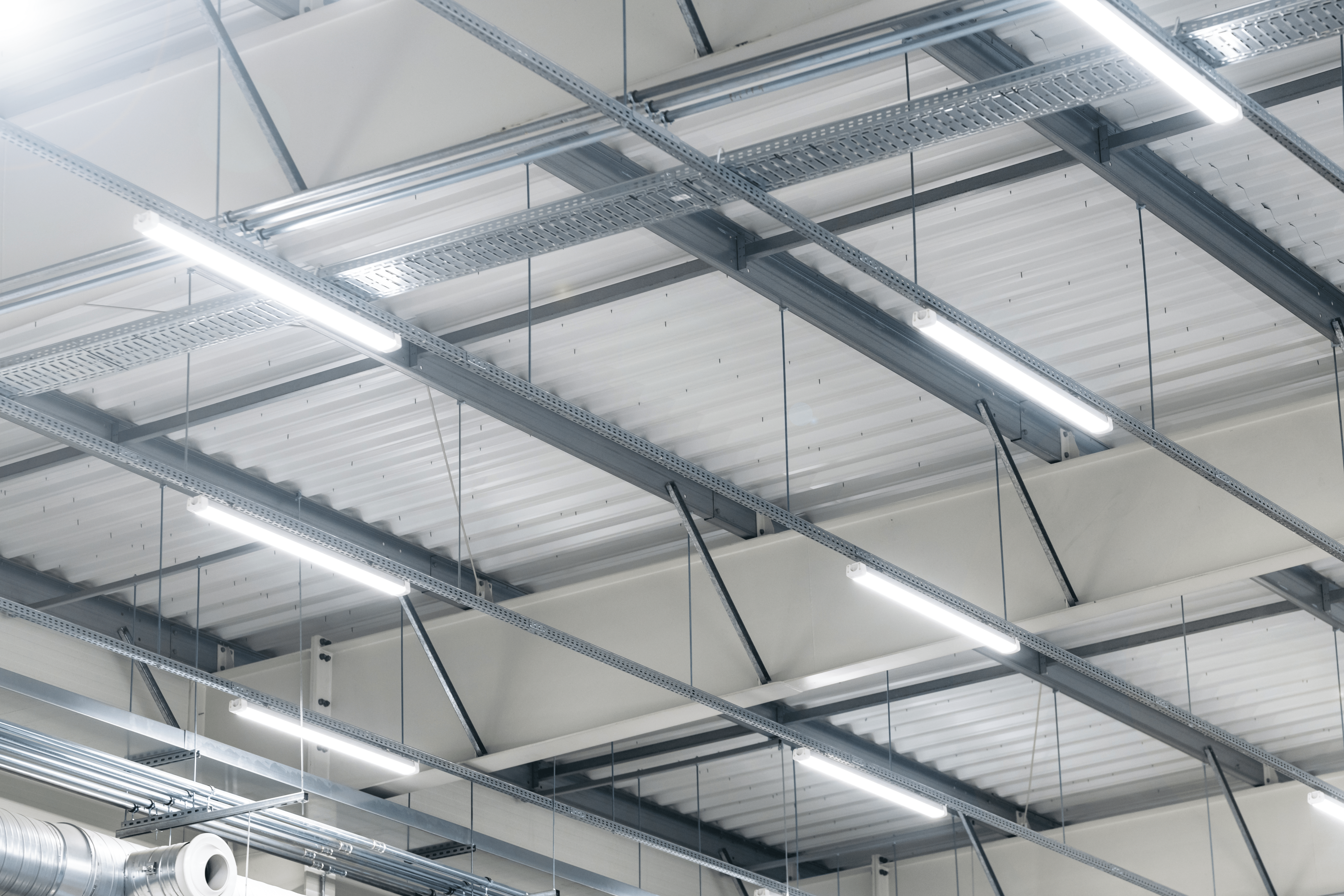
The switch to LED lighting is increasingly becoming a necessary move for UK businesses, as it becomes more and more crucial to transition away from energy-inefficient and environmentally harmful forms of lighting, towards more affordable and eco-friendly solutions.
In this article, we explain the advantages of LED light bulbs and why 2023 is the time to make the switch.
What Is LED Lighting?
Light Emitting Diode (LED) lighting is a lighting technology that utilises a low-power semiconductor to produce light, through a process called electroluminescence. LEDs were first developed in the 1960s, but it wasn’t until the 1990s that they became practical and affordable enough for widespread use in commercial applications – and as a practical replacement for fluorescent and incandescent bulbs in offices, shops, schools, and factories. The light produced by LEDs is generally brighter and of a higher quality than traditional incandescent or fluorescent light bulbs, requiring less power to produce the same lumen output.
What Are The Benefits Of LED Lighting?
Simply put, LEDs are much more energy efficient than alternative lighting sources, with a longer lifespan of up to 25 times that of other light bulbs. On its own, this is often sufficient to incentivise businesses to switch to LEDs, but there are other benefits, too.
- Versatility – LED lights are available in a wide variety of colours and styles, allowing organisations to customise their lighting ambience to suit the needs of their customers and employees.
- Safety – LED lights do not produce as much waste heat or UV radiation as other lighting sources, so they don’t come with the same fire risk as some incandescent bulbs. They also don’t rely on harmful gases and hazardous substances to provide lighting, so are easier to recycle and dispose of at end of life.
- Cost-effective: the upfront cost of installing LED lighting can be higher than traditional lighting. However, the long-term savings in energy quickly recoup the capital investment and deliver attractive long-term savings for most businesses. As LED bulbs don’t need to be replaced as often, lifetime maintenance costs are also reduced.
- Durable: compared to traditional light bulbs, which are notoriously easy to break, LED lights are extremely durable, making them more adaptable to lighting infrastructures in commercial and manufacturing settings, where they may be subjected to vibrations, rough handling, and environmental fluctuations.
Find Out More
Switching to LED lighting is an excellent investment for any business, educational organisation, or public body looking to reduce their energy costs and create a more appealing and customisable lighting environment in their premises. To find out more about your options for converting to LED lighting, click here to learn about our LED Leasing Programme – or call us directly to discuss your requirements with one of our team.
Image Source: Canva




